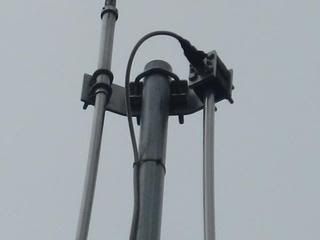i understand what you are showing us with the mast currents eddie,
im not sure what the + & - signs are meant to indicate since i see current on the outside of the radials in phase with the upper 1/4wave like a 1/2wave,
does a dipole have the same + & - either side of a dipole feedpoint in your current logs?
what happens to the astroplane when the mast/coax are removed from the model?
Bob, so that I understand better, how are you determining that the currents on the outside of the radials are in-phase with the upper 1/4 wave....?
To answer your question,
Bob85 said:
does a dipole have the same + & - either side of a dipole feedpoint in your current logs?
You can't tell the phase from the antenna images. That is why we have the tabular currents log, it notes the magnitude and phase sign for each segment in each wire and notes when the phase shifts. The image would be too crowded to indicate this much detail. I wouldn't object however if Roy provided an option to include an antenna view that showed a small + - along side of each segment in the model. But he does give us the actual data in the log so.....
IMO the plus and the minus happens in real the real world with RF, but in order for the MOM's program to report stuff, it has to freeze the images and data in time, that is probably why is described as MOM. The antenna software that Sirio demonstrates to us is better in this regard. It uses a simulator to describe in a real slowed down fashion how the currents are flowing and that is nice, and you can see in-phase in similar colors, and out-of-phase in different colors, but Eznec doesn't have such a feature.
With Eznec, you have to check the tabular log to determine the phase for each segment in a wire.
I sure hope I'm correct, and hope I made myself clear with my words.
Here's are examples of the
current signs for a 1/2 wave vs. 5/8 wave, and it shows the out-of-phase cancellation in the bottom of the 5/8 wave, and no cancellation in-phase condition for the 1/2 wave, just as we might expect.
View attachment Bob's idea on phase.pdf
Bob, the A/P model does go to pot when I remove the mast, just as you imply.

